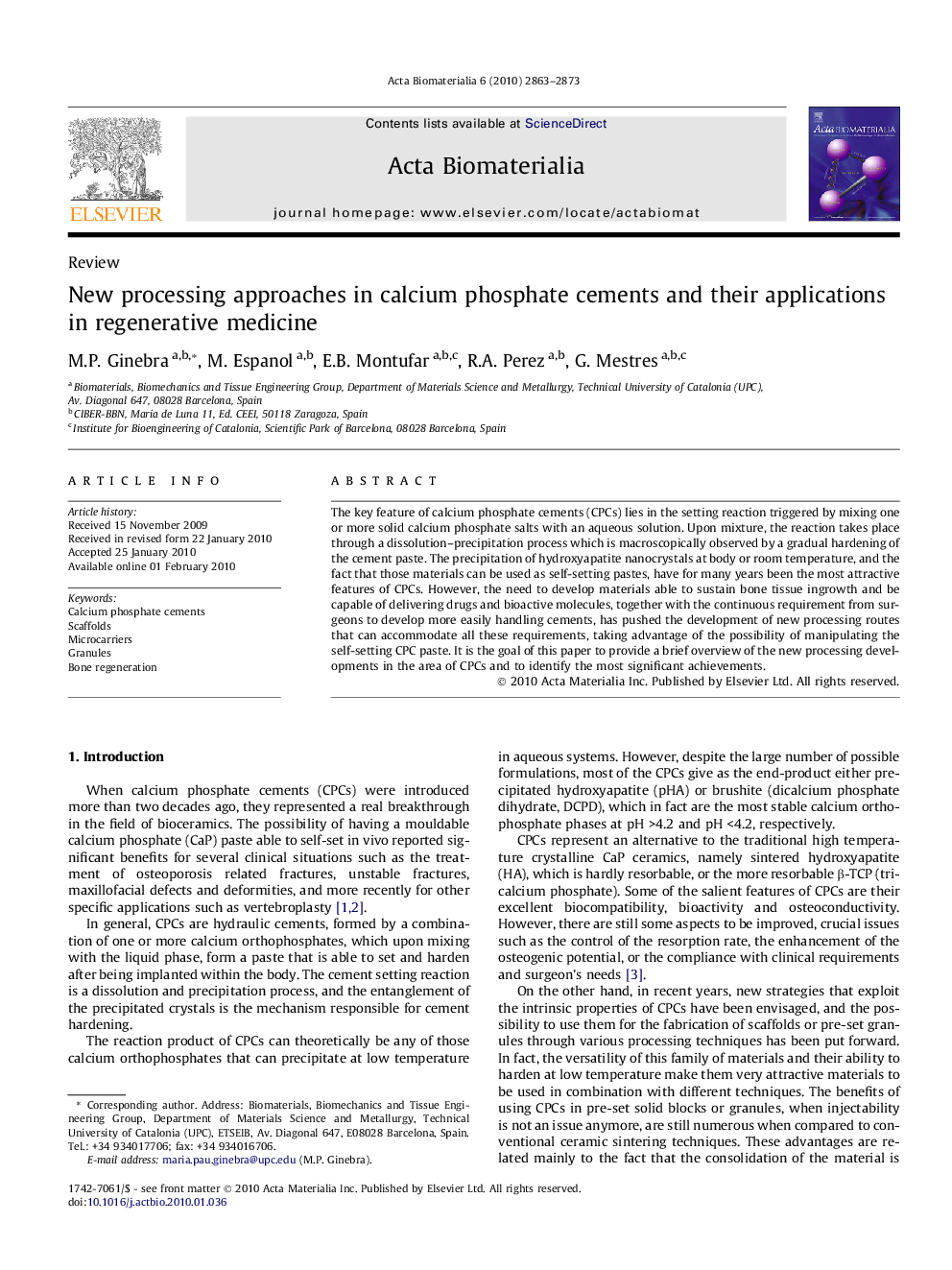| کد مقاله | کد نشریه | سال انتشار | مقاله انگلیسی | نسخه تمام متن |
|---|---|---|---|---|
| 2247 | 107 | 2010 | 11 صفحه PDF | دانلود رایگان |

The key feature of calcium phosphate cements (CPCs) lies in the setting reaction triggered by mixing one or more solid calcium phosphate salts with an aqueous solution. Upon mixture, the reaction takes place through a dissolution–precipitation process which is macroscopically observed by a gradual hardening of the cement paste. The precipitation of hydroxyapatite nanocrystals at body or room temperature, and the fact that those materials can be used as self-setting pastes, have for many years been the most attractive features of CPCs. However, the need to develop materials able to sustain bone tissue ingrowth and be capable of delivering drugs and bioactive molecules, together with the continuous requirement from surgeons to develop more easily handling cements, has pushed the development of new processing routes that can accommodate all these requirements, taking advantage of the possibility of manipulating the self-setting CPC paste. It is the goal of this paper to provide a brief overview of the new processing developments in the area of CPCs and to identify the most significant achievements.
Journal: Acta Biomaterialia - Volume 6, Issue 8, August 2010, Pages 2863–2873